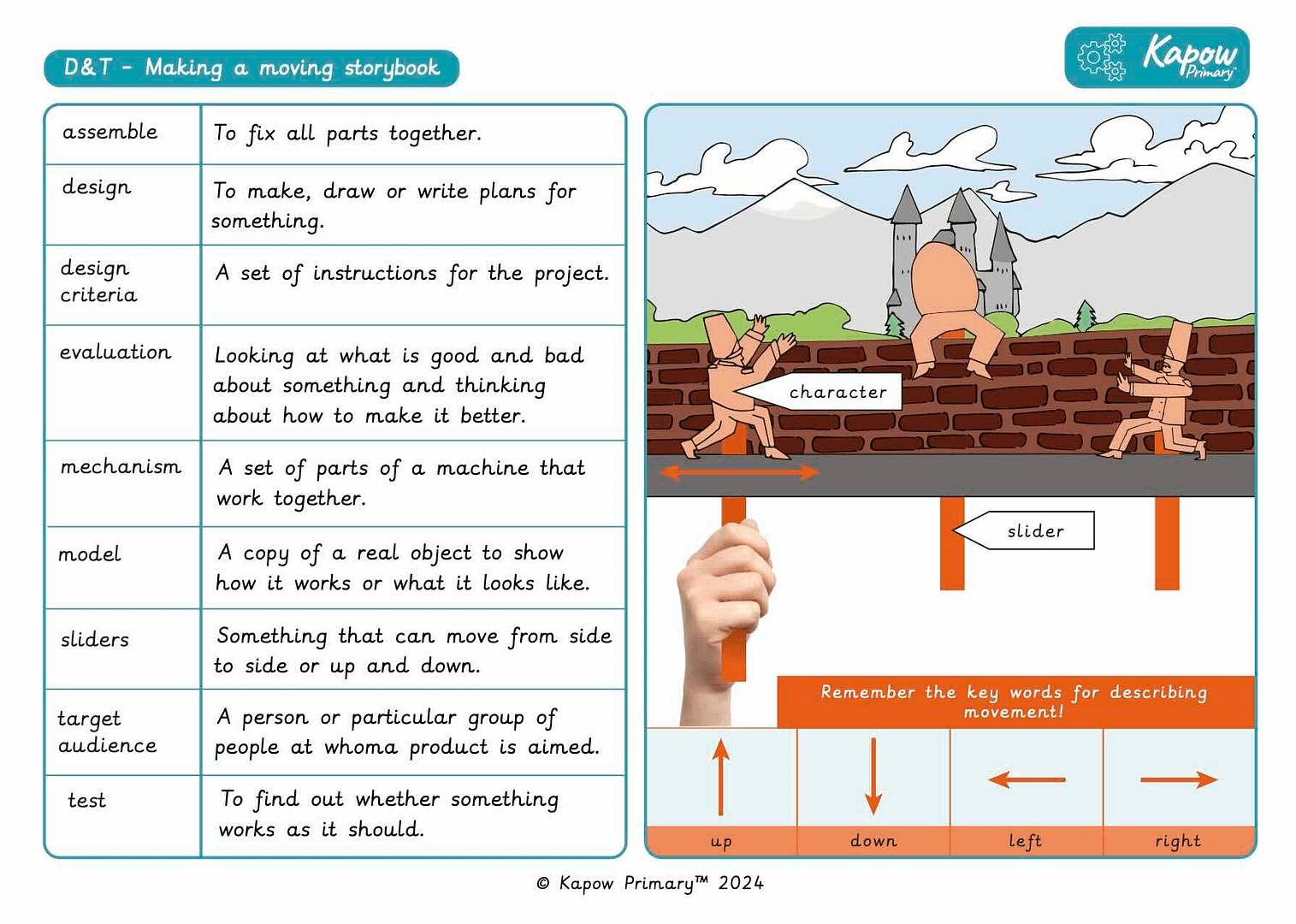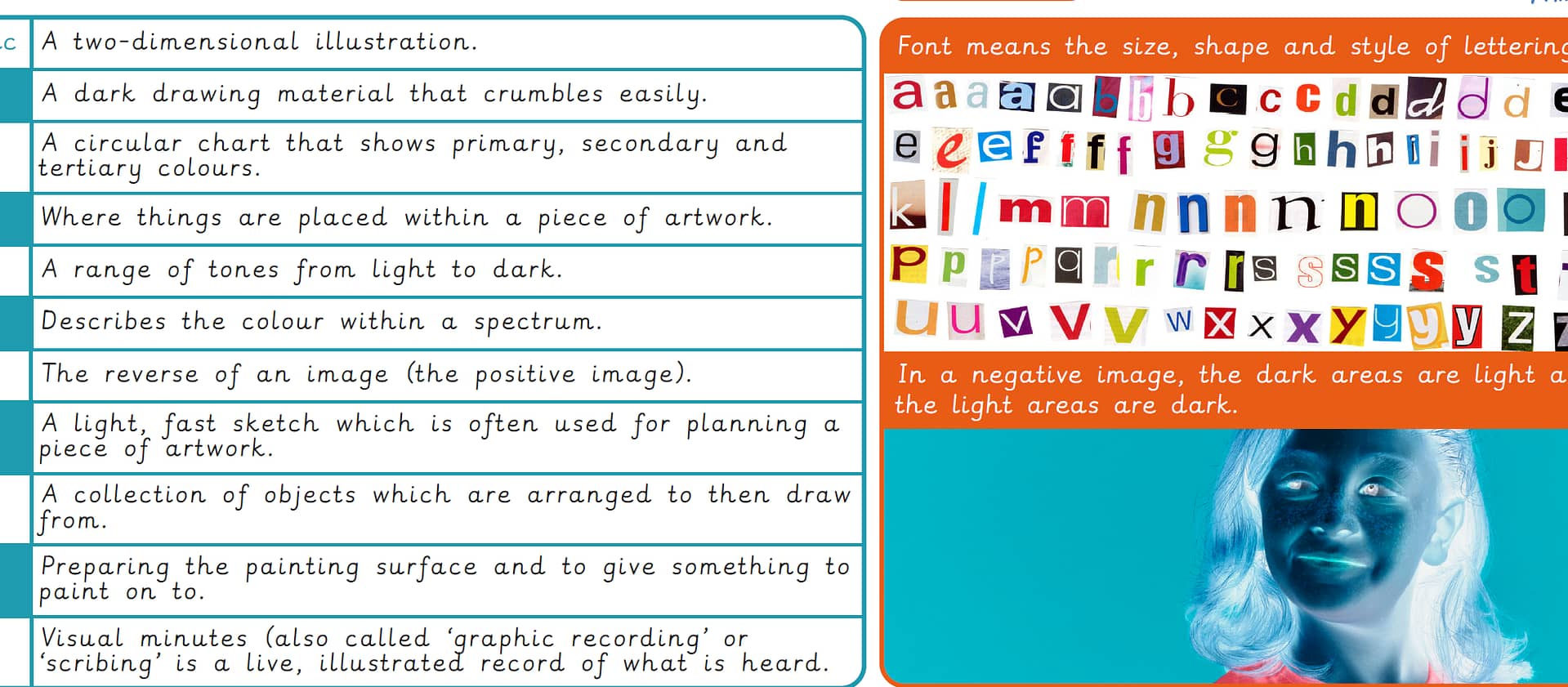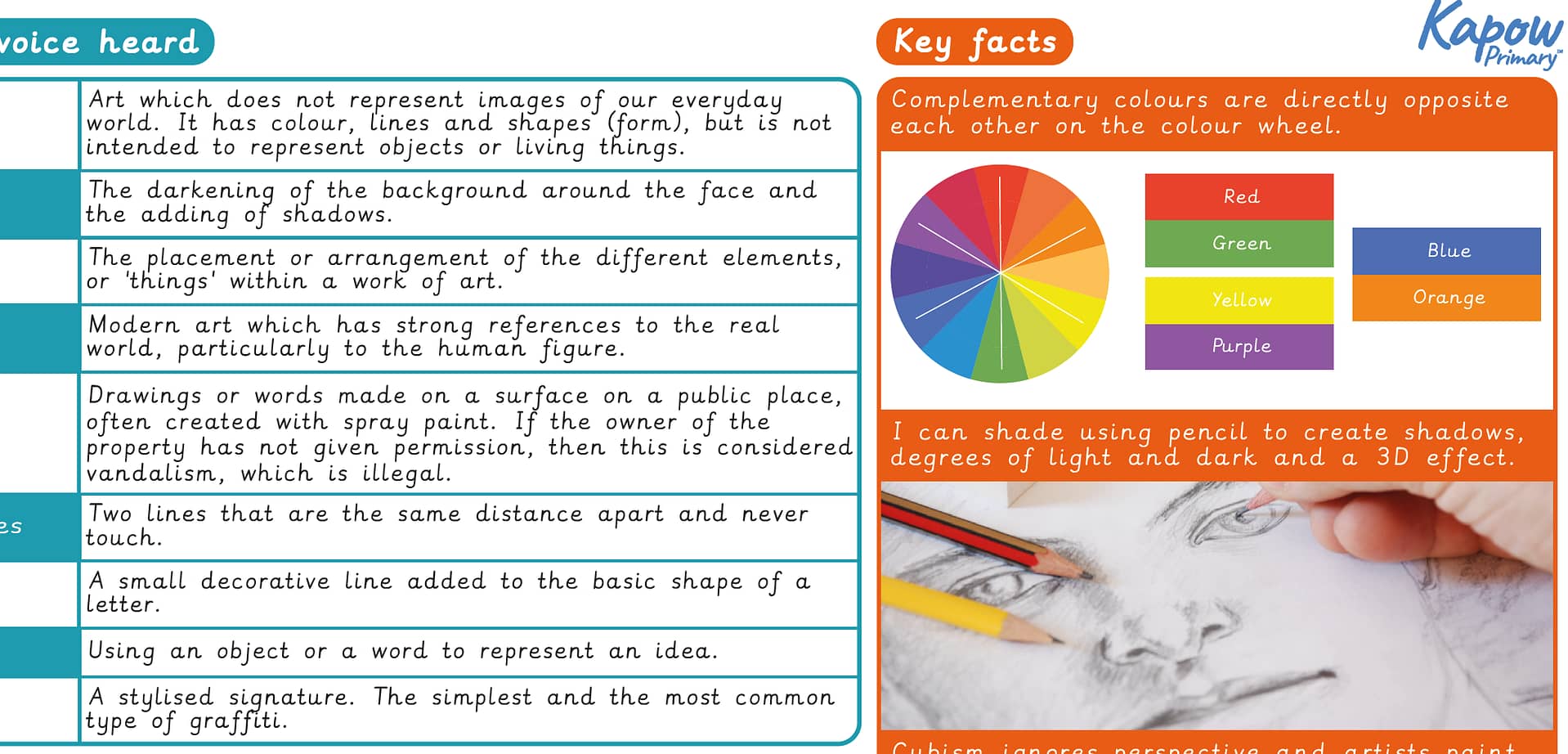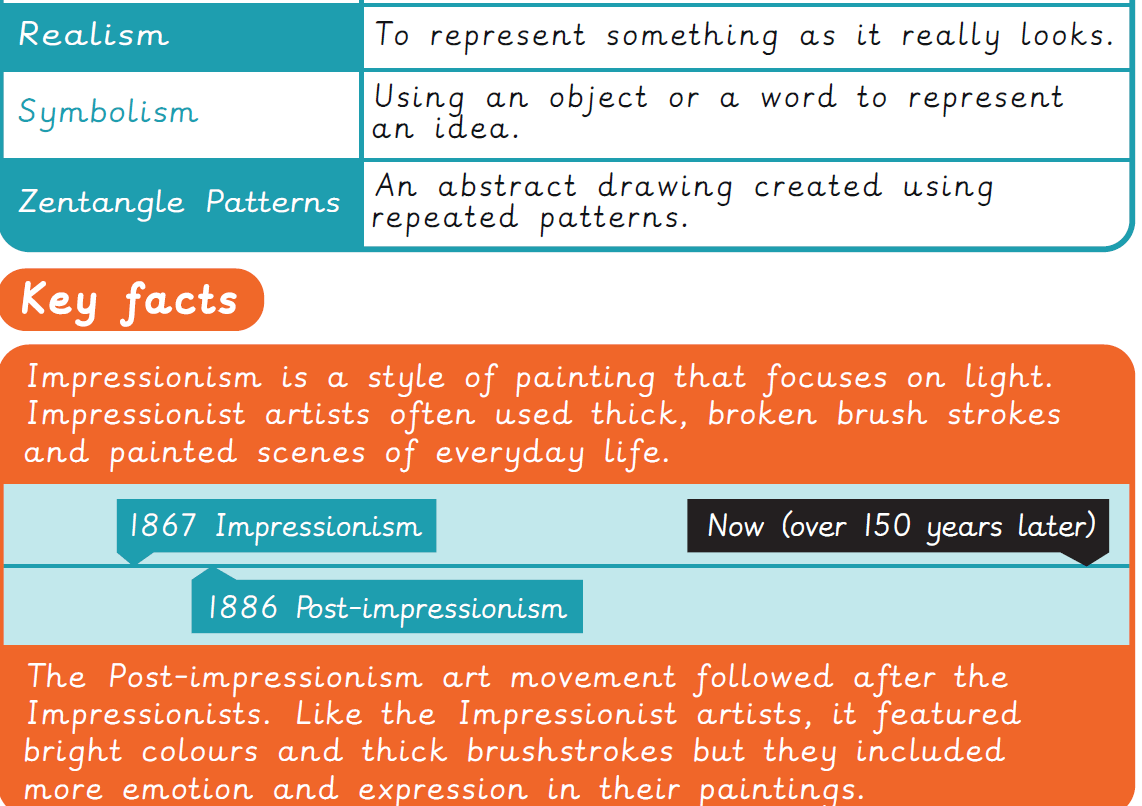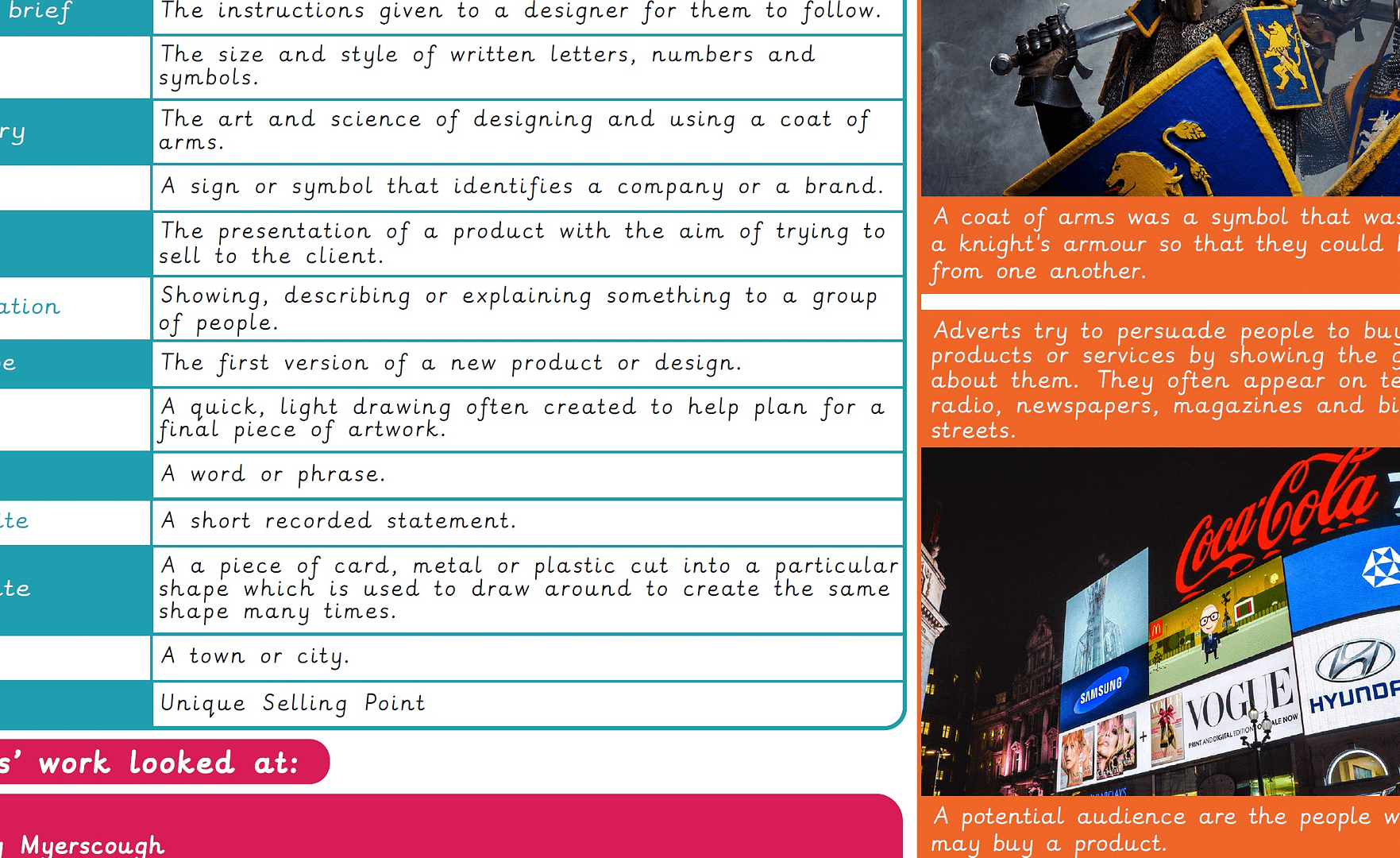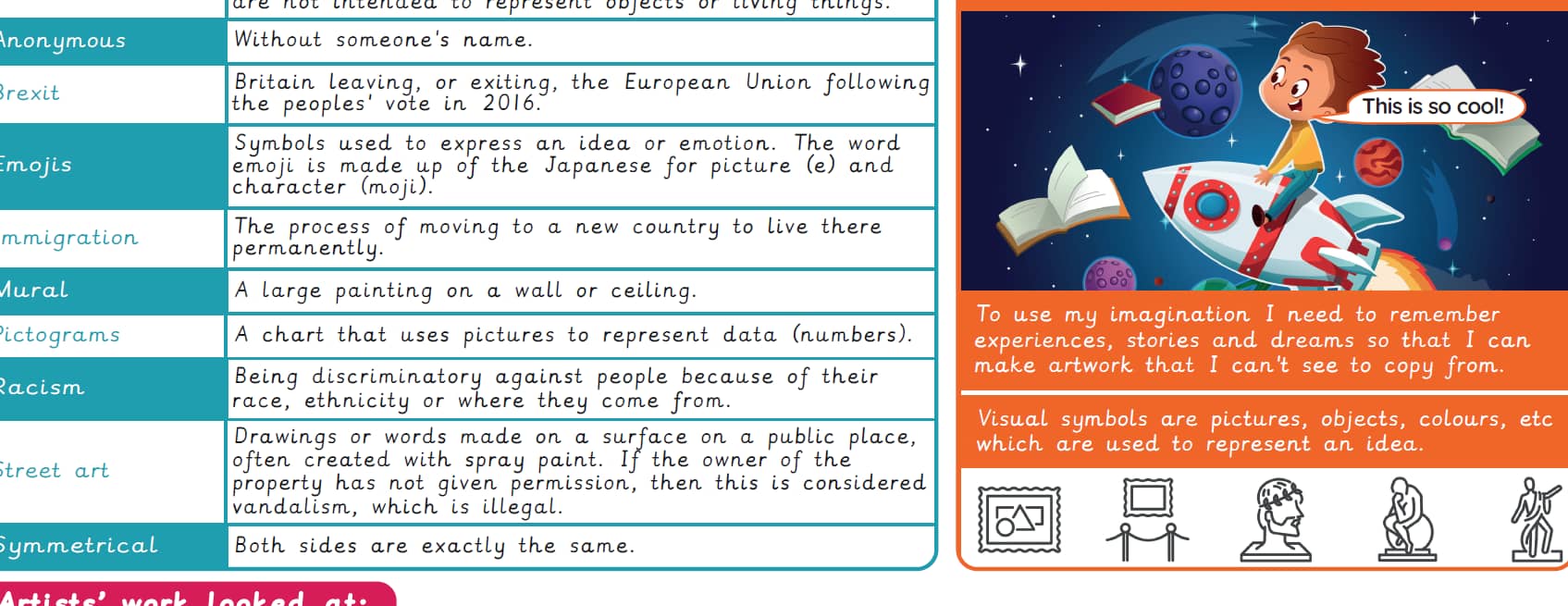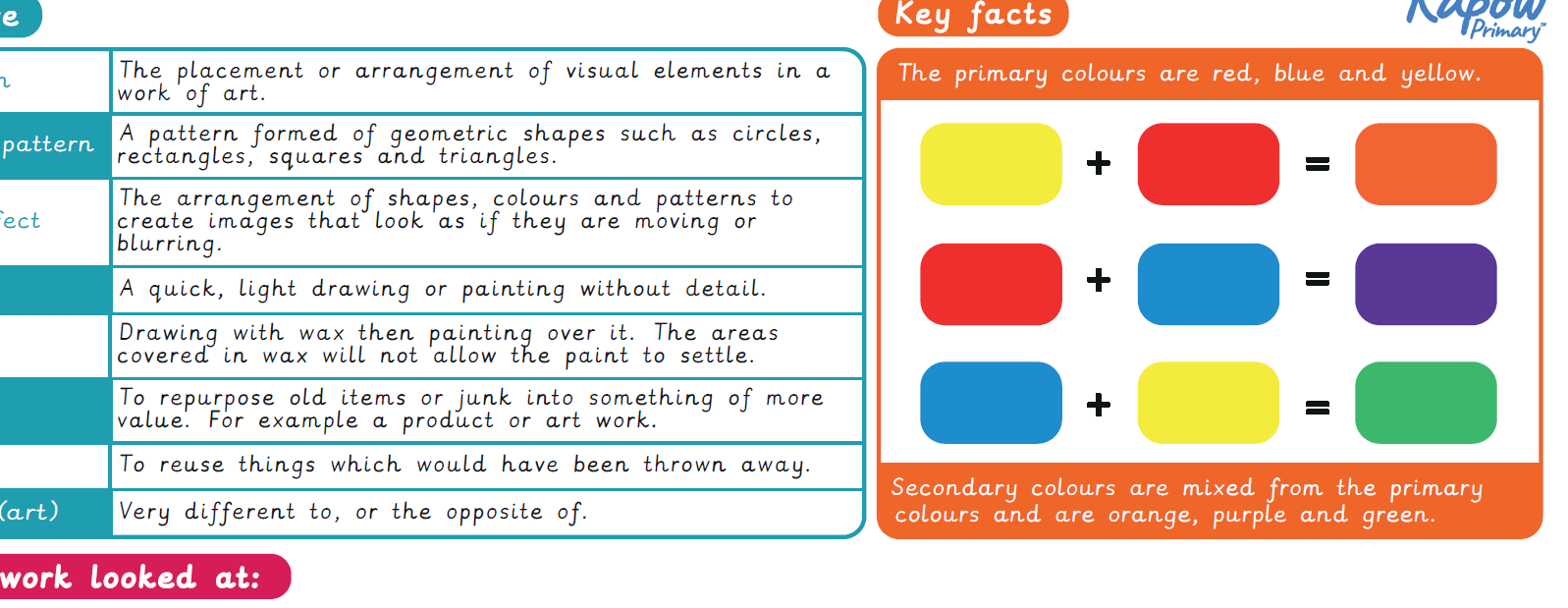Teaching resource: Knowledge organiser
Knowledge organiser – Art and design scheme Y6: Still life
A Knowledge organiser that captures the essential knowledge and skills learnt throughout the now archived unit Art and Design, Year 6, Still Life.
This Art and Design resource is designed to support the pupils as they explore the techniques and concepts behind still-life artwork. It introduces key vocabulary such as composition, greyscale, hue, underpainting, and negative image, helping the pupils understand how artists use arrangement, tone, and colour to create depth and focus. The pupils will also learn about the use of charcoal, sketching, and visual minutes as methods of artistic expression.
Knowledge organiser – Art and design Y6: Make my voice heard
A Knowledge organiser that captures the essential knowledge and skills learnt throughout the unit Art and Design, Year 6, Make My Voice Heard.
This Art and Design resource is designed to support the pupils as they explore how artists use visual language to express opinions, emotions, and messages. It introduces key vocabulary such as abstract, figurative, graffiti art, symbolism, and chiaroscuro, helping the pupils understand different artistic techniques and their impact. The pupils will also explore how composition, parallel lines, and serif fonts contribute to the overall meaning of an artwork.
Archived – Knowledge organiser Art and design – Y6: Art and design skills
A Knowledge Organiser that captures the essential knowledge and skills learnt throughout the unit Archived – Art and design, Year 6, Art and design skills.
This resource supports pupils in deepening their understanding of key artistic styles and techniques, including abstract art, symbolism, realism, and the concept of mindfulness in creative practice. It introduces important terminology such as “herringbone,” “polyprint tile,” and “zentangle patterns,” alongside the design concept of prototyping. Pupils explore the work of influential artists and designers like Claude Monet, Edgar Degas, William Morris, and milliners such as Stephen Jones and Bundle MacLaren. The resource offers a strong foundation in recognising different art movements, including Impressionism and Post-impressionism, fostering analytical skills and creativity through both historical context and hands-on exploration.
Knowledge organiser – Art and design Y5: Design for a purpose
A Knowledge organiser that captures the essential knowledge and skills learnt throughout the now archived unit Art and Design, Year 5, Design for a Purpose.
This Art and design resource is designed to support the pupils as they explore how design is used to serve a function and communicate ideas. It introduces key vocabulary such as design brief, client, font, logo, and prototype, helping the pupils understand how products are created with a specific purpose in mind. The pupils will also learn about concepts like unique selling points (USP), advertising, and branding, including how logos and slogans are used to appeal to potential audiences.
Knowledge Organiser – Art and design Y5: Every picture tells a story
A Knowledge organiser that captures the essential knowledge and skills learnt throughout the now archived unit Art and Design, Year 5, Every Picture Tells a Story.
This Art and design resource is designed to support the pupils as they explore how visual symbols, abstract art, and storytelling are used in artistic expression. It introduces key vocabulary such as abstract art, murals, pictograms, street art, and visual symbols, helping the pupils understand how artists use imagery to convey ideas and emotions. The pupils will also learn about concepts like symmetry, speech bubbles, and the use of emojis in modern visual communication.
Archived – Knowledge organiser – Art and design Y5: Art and design skills
A Knowledge organiser that captures the essential knowledge and skills learnt throughout the now unit Archived – Art and Design, Year 5, Art and Design Skills.
This resource is designed to support pupils in developing various artistic techniques and approaches. It introduces key vocabulary such as analytical observational drawing, annotation, continuous line drawing, collage, and exploded diagrams, helping the pupils understand different methods of creating and presenting artwork. The pupils will also explore the concepts of invention and prototypes and how computer-aided design (CAD) can be used in artistic processes.
Archived – Knowledge Organiser – Art and design Y5: Formal elements of art: Architecture
A Knowledge organiser that captures the essential knowledge and skills learnt throughout the now archived unit Archived – Art and Design, Year 5, Formal Elements of Art: Architecture.
This resource is designed to support the pupils as they explore key architecture and design elements. It introduces key vocabulary such as amphitheatre, ornate, composition, pattern, and symbolism, helping the pupils understand architectural styles and features. The pupils will also learn about architects as designers of buildings and explore terms like stadium, temple, and plaque, which relate to different types of structures.
Archived – Knowledge organiser – Art and design Y4: Sculpture
A Knowledge organiser that captures the essential knowledge and skills learnt throughout the now archived unit Archived – Art and Design, Year 4, Sculpture.
This resource is designed to support the pupils as they explore different sculptural techniques and materials. It introduces key vocabulary such as composition, geometric pattern, optical effect, wax resist, and upcycle, helping the pupils understand how artists use form, texture, and contrast to create three-dimensional artwork. The pupils will also study the work of sculptors such as El Anatsui, Sokari Douglas Camp, Sam Francis, and Giuseppe Arcimboldo, examining how they use different materials and artistic methods to produce unique sculptures. It is perfect for consolidating essential knowledge and encouraging creativity by allowing the pupils to experiment with various sculptural techniques.

